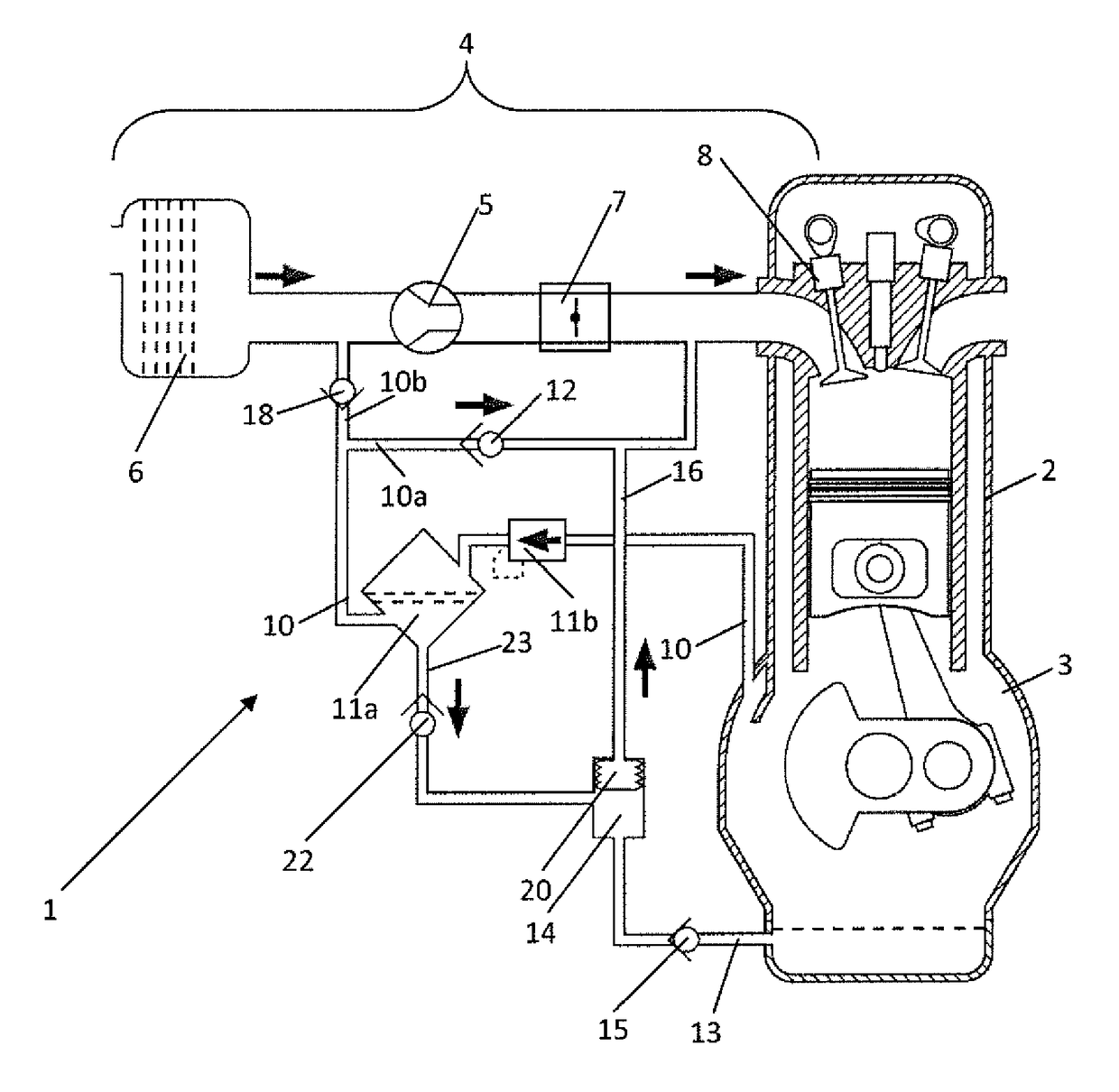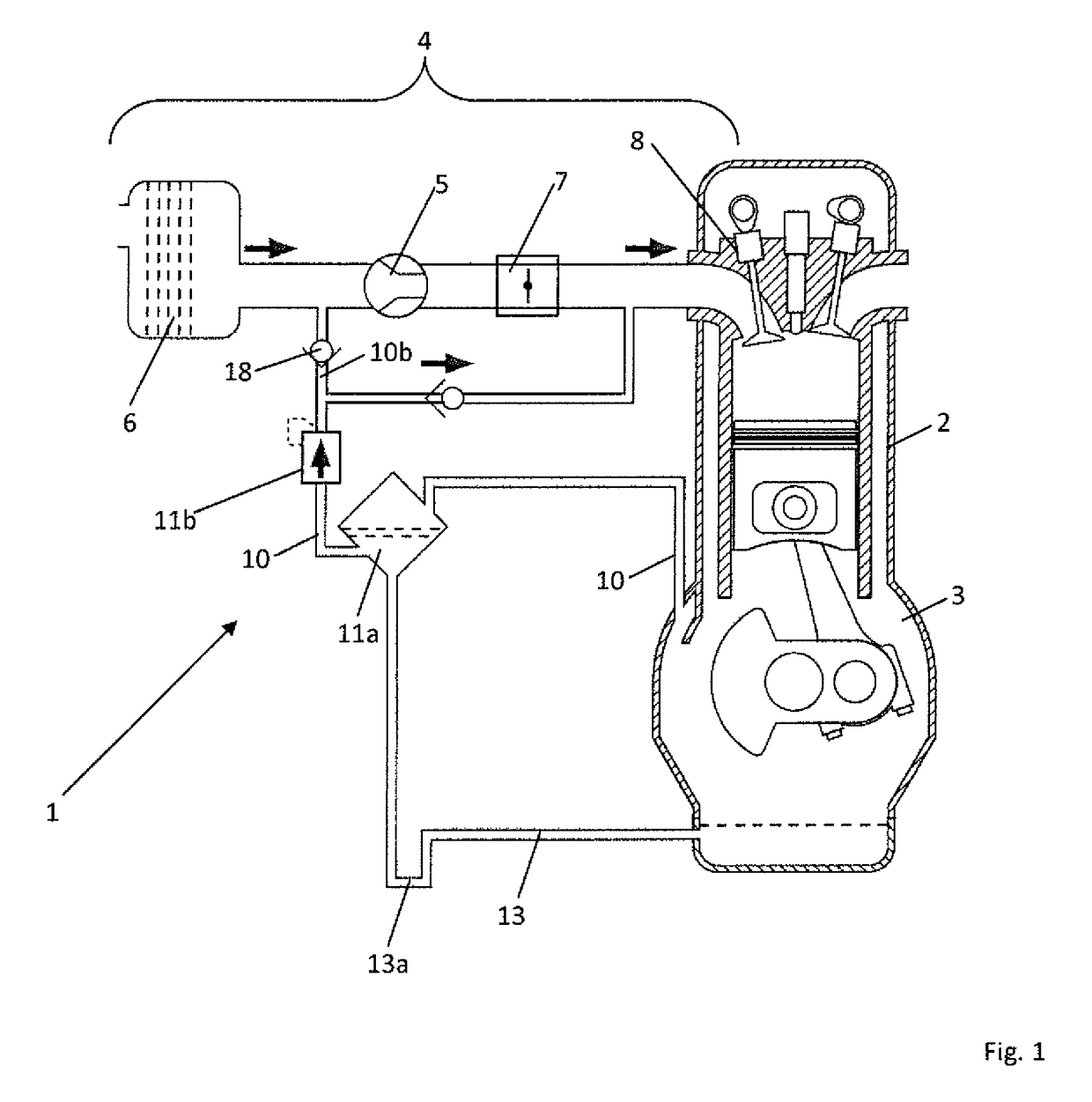Ventilation system for supercharged combustion engines
a technology of combustion engine and ventilation system, which is applied in the direction of engine components, non-fuel substance addition to fuel, internal combustion piston engines, etc., can solve the problems of only realizing the return of oil from the air-oil separator to the crankcase through the siphon, small pressure difference between the air-oil separator and the crankcase, and only controlling the pressure. , to achieve the effect of improving the ventilation system and fast oil return
- Summary
- Abstract
- Description
- Claims
- Application Information
AI Technical Summary
Benefits of technology
Problems solved by technology
Method used
Image
Examples
Embodiment Construction
[0042]FIG. 1 shows an internal combustion engine according to the state of the art as already described above.
[0043]FIG. 2 shows a further internal combustion engine 2, which has been adapted according to the invention. To this end, a bellows is arranged as the actuating element 20 in the tank 14. The line 23 leading to the tank 14 further comprises a return valve 22 as the tank-inlet valve, which under an excessive pressure in the tank 14 compared to the pressure in section 10e of the ventilation line 10 closes. The ventilation line 10 here comprises the sections 10a to 10e. Further, in the return line 13 reaching from the tank 14 to the crankcase 3, via which separated oil is returned to the crankcase 3, a return valve 15 as the tank-outlet valve is provided which under a higher pressure of the crankcase relative to the pressure in the tank 14 closes.
[0044]A connection line 16 branches off from this ventilation line 10, which in the present case operates as ventilation line 10a fo...
PUM
 Login to View More
Login to View More Abstract
Description
Claims
Application Information
 Login to View More
Login to View More - R&D
- Intellectual Property
- Life Sciences
- Materials
- Tech Scout
- Unparalleled Data Quality
- Higher Quality Content
- 60% Fewer Hallucinations
Browse by: Latest US Patents, China's latest patents, Technical Efficacy Thesaurus, Application Domain, Technology Topic, Popular Technical Reports.
© 2025 PatSnap. All rights reserved.Legal|Privacy policy|Modern Slavery Act Transparency Statement|Sitemap|About US| Contact US: help@patsnap.com



